Welcome, fellow Southern Italy enthusiasts! If you’ve been daydreaming about crystal-clear waters, picturesque villages, and Italian culinary delights, buckle up!
I’m about to take you on a captivating 4-day Calabria road trip starting from the Lamezia Terme International Airport, to head north into the heart of Calabria and Maratea, (which is actually in the southwestern corner of Basilicata).
This self-drive itinerary will showcase the undeniable charm of Italy’s lesser-known southern region, where some of Italy’s most beautiful villages are to be found. These Calabria destinations will inspire you to discover The Real Italy!
TIP 1.
If you are flying to Calabria Italy, you will most likely arrive at Lamezia Terme International Airport.
Here you will have all the major rental car companies across the road from the terminal. We have rented from quite a few of them and they are all very organised and professional.
TIP 2.
We travelled in early May, (Try to avoid the summer months of July and August if possible), and the prices for both the rental car and accommodation were very reasonable in all the towns we visited.
We rented a Hybrid Lancia Ypsilon for the full 4 days at a total cost of 150 Euros (including full insurance) and we covered 650 km and spent 60 euros on fuel.
The accommodation we chose for the 3 nights were 3-star Hotels costing 50-100 Euros per night, for a double room, including breakfasts.
Day 1: Calabria Road Trip
Paola
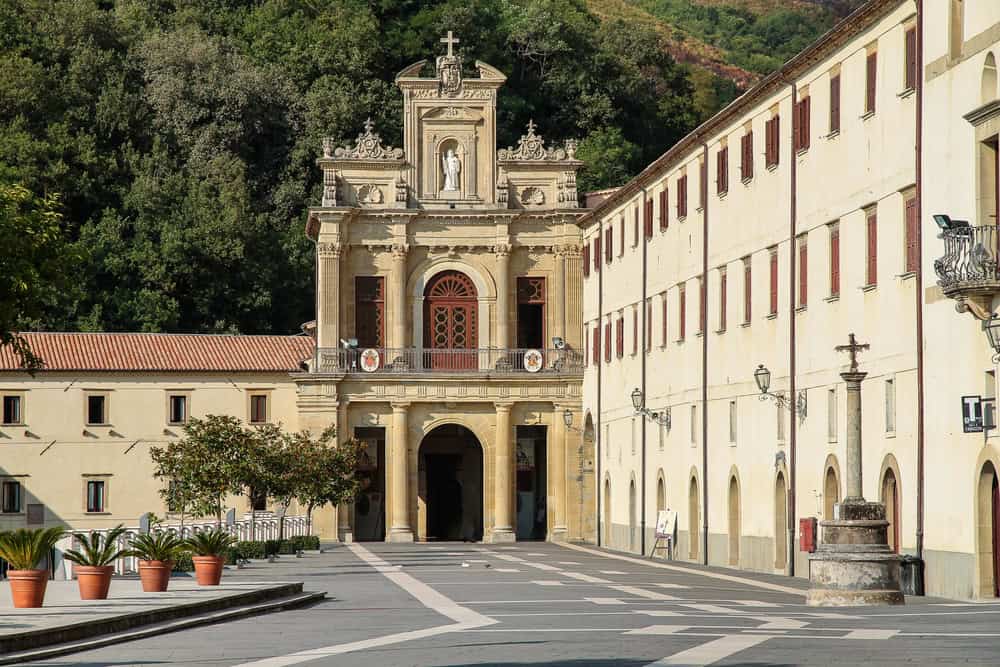
Paola: Our first stop on this road trip was in Paola, a coastal gem renowned for its spiritual significance and natural beauty. Home to the Sanctuary of Saint Francis of Paola, this town isn’t just a pilgrimage site but a tranquil retreat surrounded by verdant landscapes.
Stroll through the serene gardens, take time to soak in this beautiful spot, and start your trip with a dose of calm. And if you’re feeling adventurous, hike up to the Franciscan Monastery for stunning views of the coast.
Diamante

Diamante: Known as the ‘City of Murals’, Diamante is a feast for the eyes. The town’s streets are adorned with over 150 murals, turning the entire place into an open-air gallery.
Each painting tells a story, reflecting the local culture, traditions, and landscapes. Don’t miss the chance to explore this colourful town.
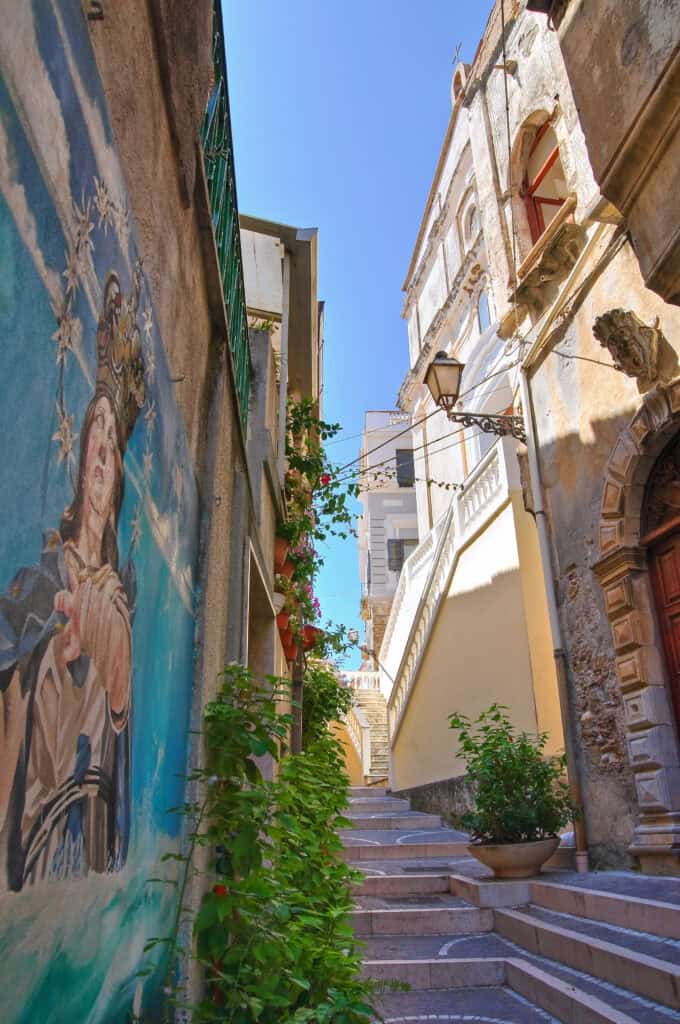
Also, don’t leave without trying the famous ‘peperoncino’ ice cream or indulging in a fiery pasta dish. And if you want to take home some of that delicious heat, don’t forget to visit the annual Peperoncino Festival held in September.
Scalea

Scalea: This is a charming medieval town perched on a rocky hill overlooking the Mediterranean. Take a stroll through its ancient streets, admire the beautiful churches and palaces, and don’t forget to stop by the Castle of Scalea for panoramic views of the town and sea.
But the highlight of Scalea is its crystal-clear waters. Spend your days sunbathing, swimming, and participating in water activities like snorkelling and scuba diving.
Don’t miss out on the fresh seafood dishes like grilled swordfish and octopus salad. And be sure to save room for those delicious Italian desserts.
If you’re feeling more adventurous and have some extra time available, take a day trip to the nearby Pollino National Park, known for its stunning landscapes and hiking trails.
The beauty and diversity of national parks in Southern Italy, including their rugged landscapes and hiking opportunities, are truly unparalleled, offering a perfect blend of adventure and tranquillity.
Praia a Mare (overnight stay)

Praia a Mare: Our next stop is Praia a Mare, a small town known for its stunning beaches along the Tyrrhenian Sea. Spend your day lounging on soft sands, taking dips in the sea and soaking up the Mediterranean sun, all while enjoying the scenic beauty of the spectacular coastline.
On the other hand, for those seeking some adventure, rent a kayak and explore the nearby caves and coves. And when hunger strikes, head to one of the many beachfront restaurants for some delicious seafood.
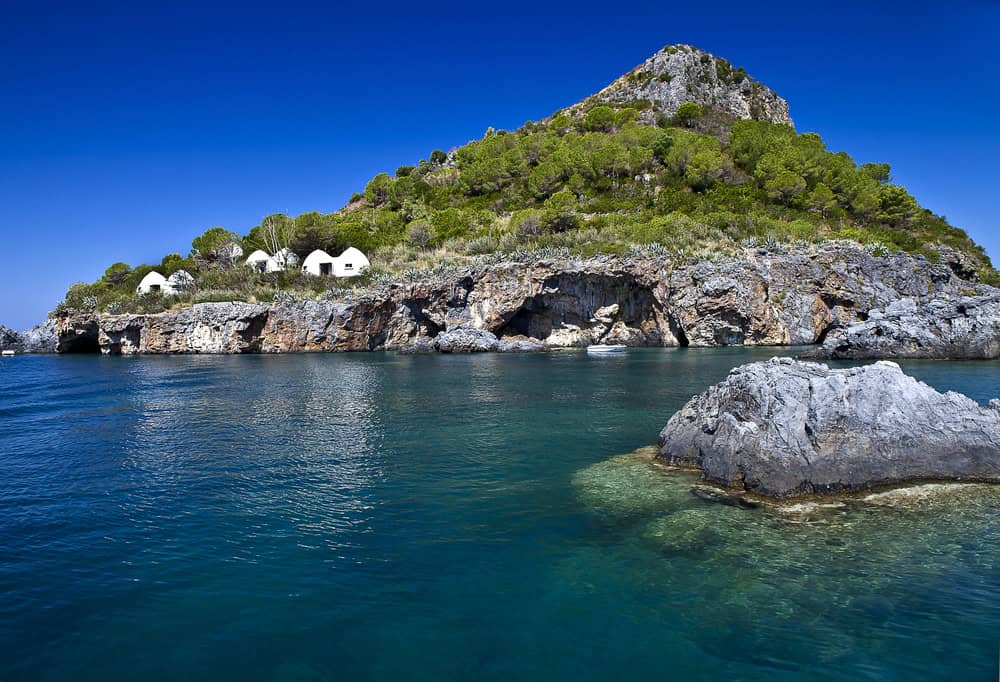
Also worth a visit is the nearby Dino Island, an uninhabited island with ancient ruins and a rich past. It’s the perfect spot for a day trip and some island exploration.
Day 2:
San Nicola Arcella
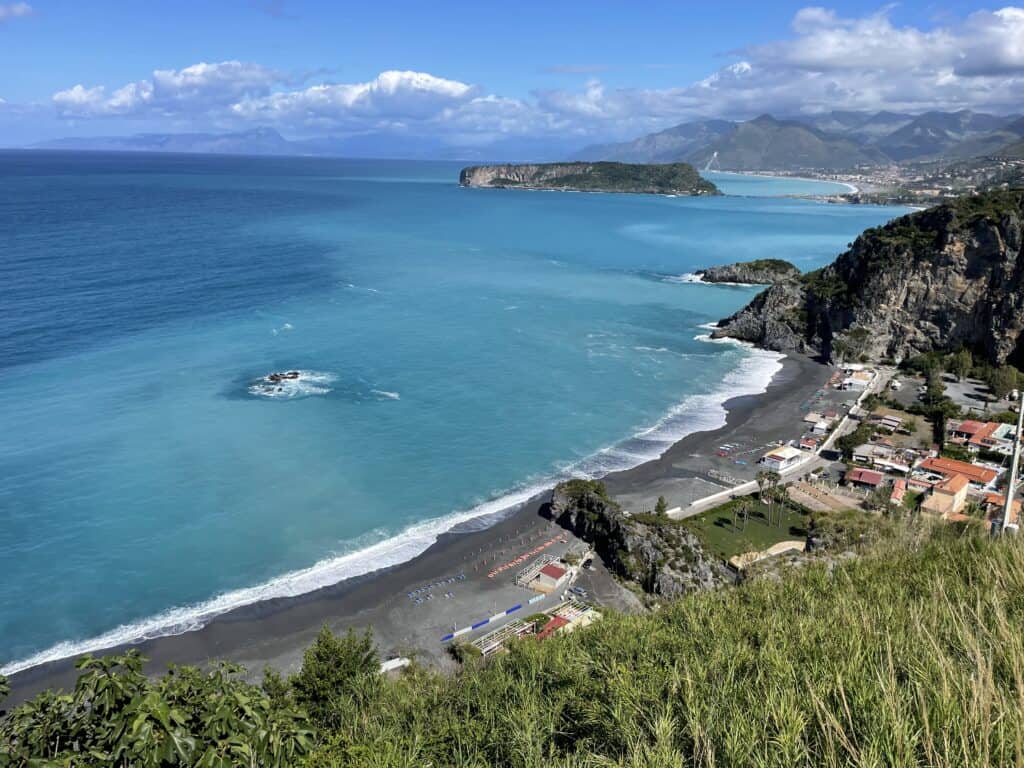
San Nicola Arcella: This enchanting village is famous for its incredible sea caves and the majestic Arco Magno which are nearby. Before exploring there, however, head straight for the Belvedere di San Nicola Arcella at the end of Via Umberto.
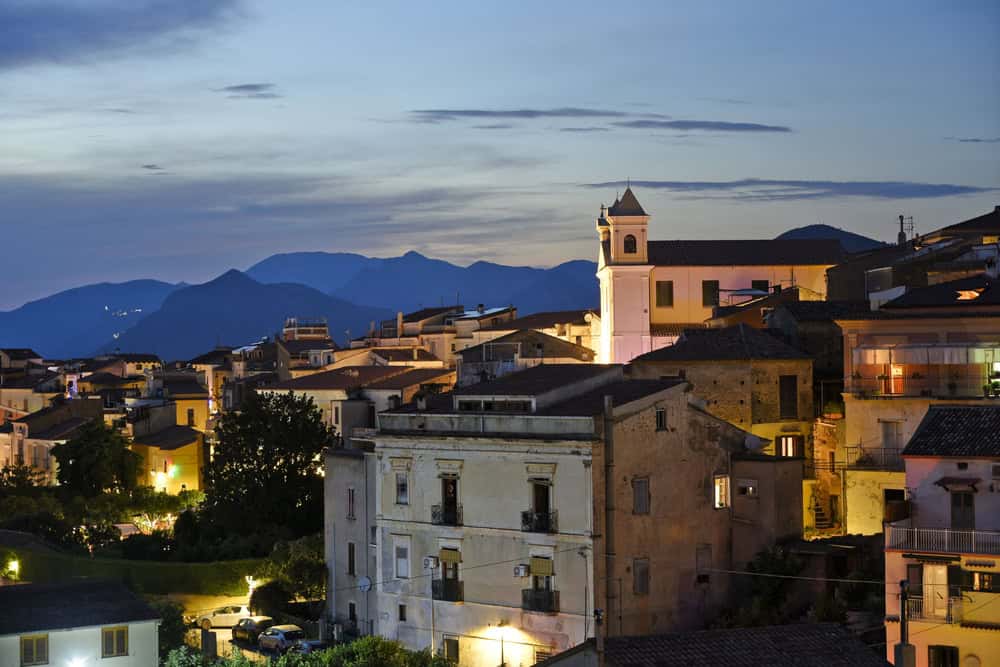
This panoramic lookout point is a must-see. The views from here are simply spectacular so don’t forget your camera or phone.
As always, don’t forget to try some local delicacies while in San Nicola Arcella. The region is known for its fresh seafood pasta and traditional dishes such as swordfish carpaccio and tagliatelle alla Norma.
After a day of exploring, relax at one of the charming cafes or restaurants in the village square, surrounded by picturesque architecture and friendly locals.
Arco Magno
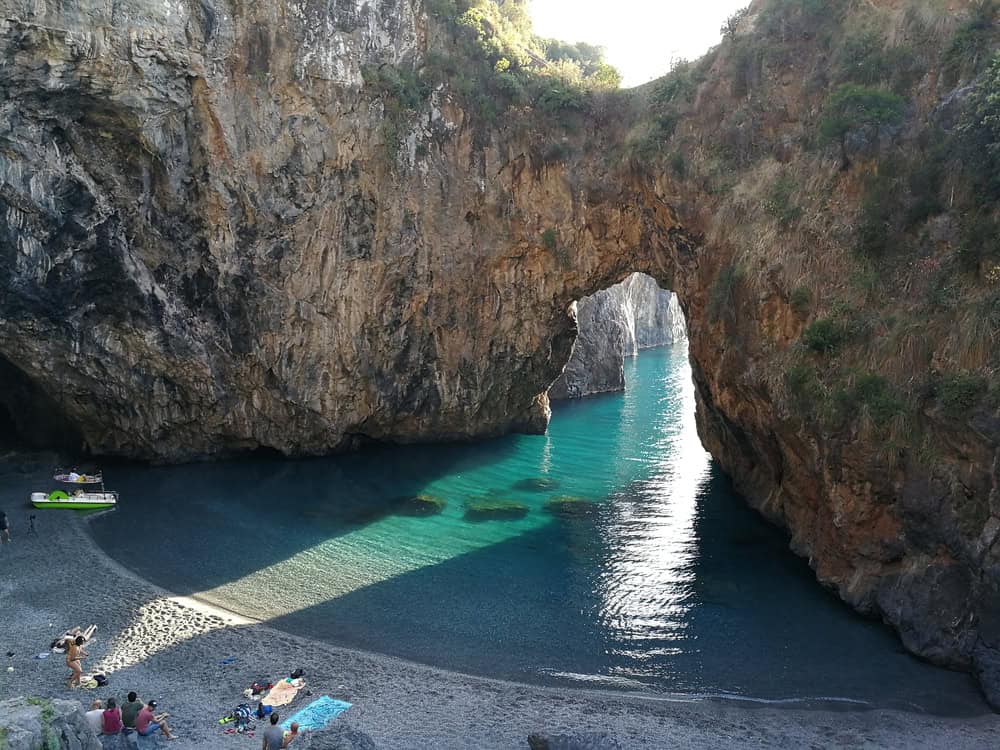
Arco Magno: Speaking of Arco Magno, this natural wonder deserves a moment of awe. This beautiful spot and The arch itself, carved by the waves, frames the sky and the turquoise waters in a way that seems almost surreal. Take your time here, capture the beauty, and let the serene atmosphere wash over you.
Surrounded by towering cliffs and lush vegetation, the tranquillity you’ll find as you swim or boat through the arch’s opening is unparalleled.
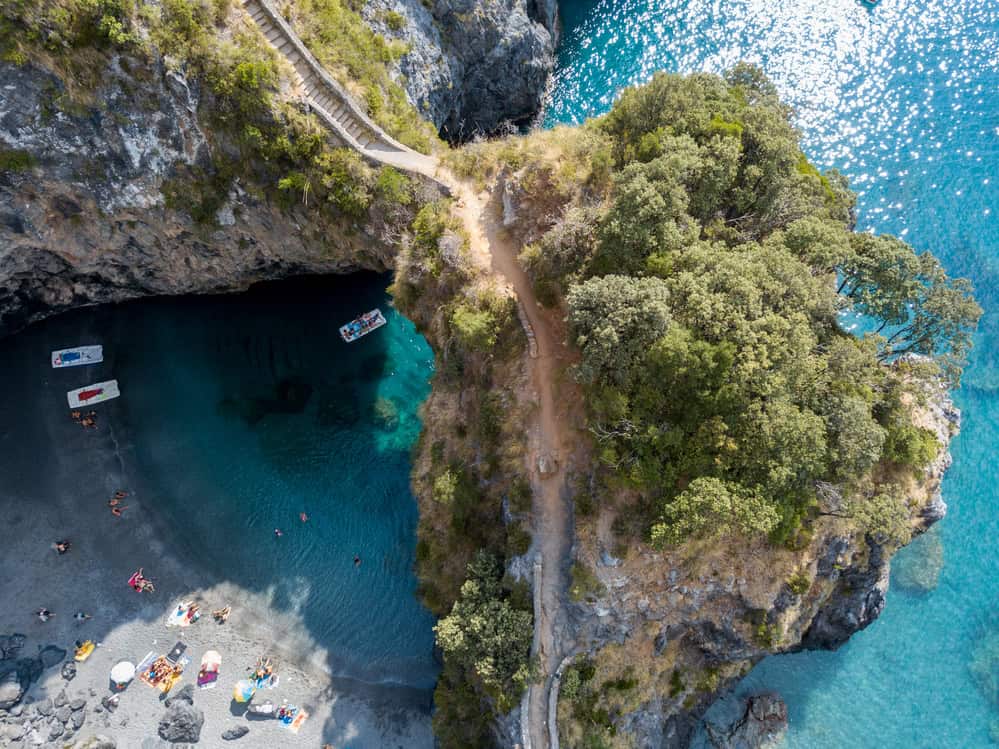
For those who love to capture moments, the play of light through the arch at different times of the day creates a photographer’s paradise, offering scenes that seem to change the mood with the shifting skies.
Maratea ( Basilicata ) (Overnight Stay)
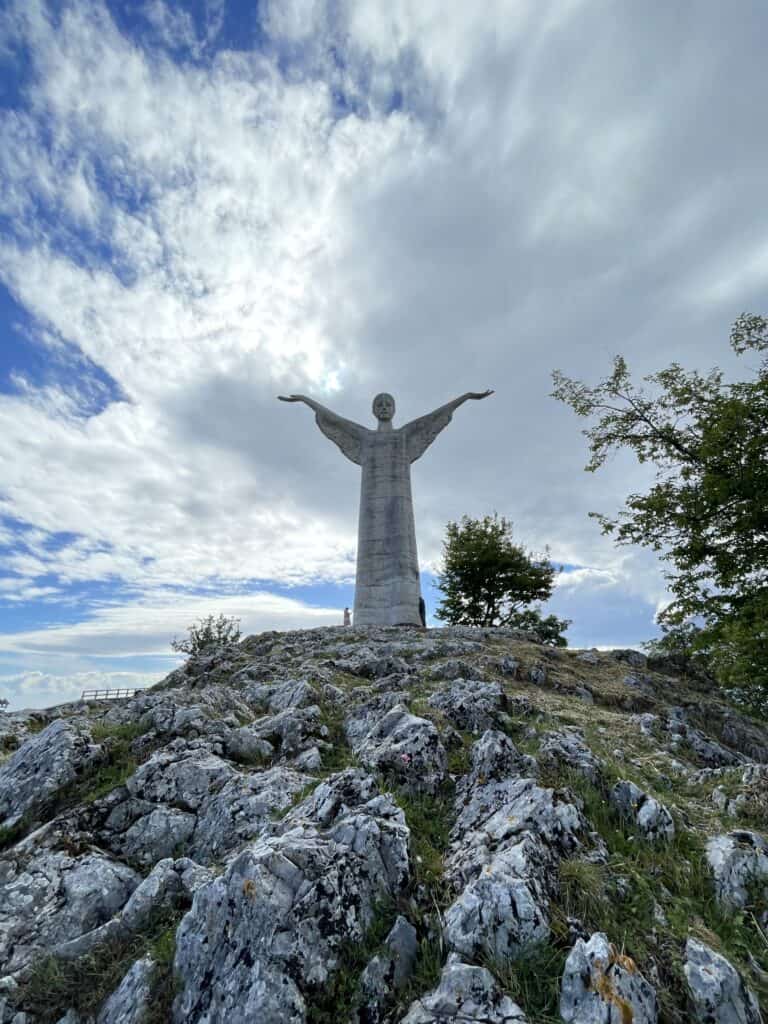
Maratea: Often dubbed the ‘Pearl of the Tyrrhenian’, Maratea stuns with its old-world charm and natural scenery. The historic centre (Centro Storico) is slightly inland and perched on a hillside that overlooks the surrounding landscapes.
The town’s highlight, however, is undoubtedly the Statue of Christ the Redeemer, Italy’s answer to Rio’s famous landmark, offering panoramic views of the surrounding area. Wander through the narrow alleys of the old town, and you’ll feel like you’ve stepped back in time.

For panoramic views of the town and surrounding landscape, hike or drive up to the Christ of Maratea statue, standing tall at 70 feet. It’s also worth checking out the ancient churches and monasteries scattered throughout Maratea, each with its own unique style and charm.
And of course, no visit to Maratea is complete without indulging in the local cuisine. From fresh seafood dishes to hearty mountain specialties, there’s something for every taste bud here. And don’t forget to try some local wine or limoncello while you’re at it!
Day 3:
Civita
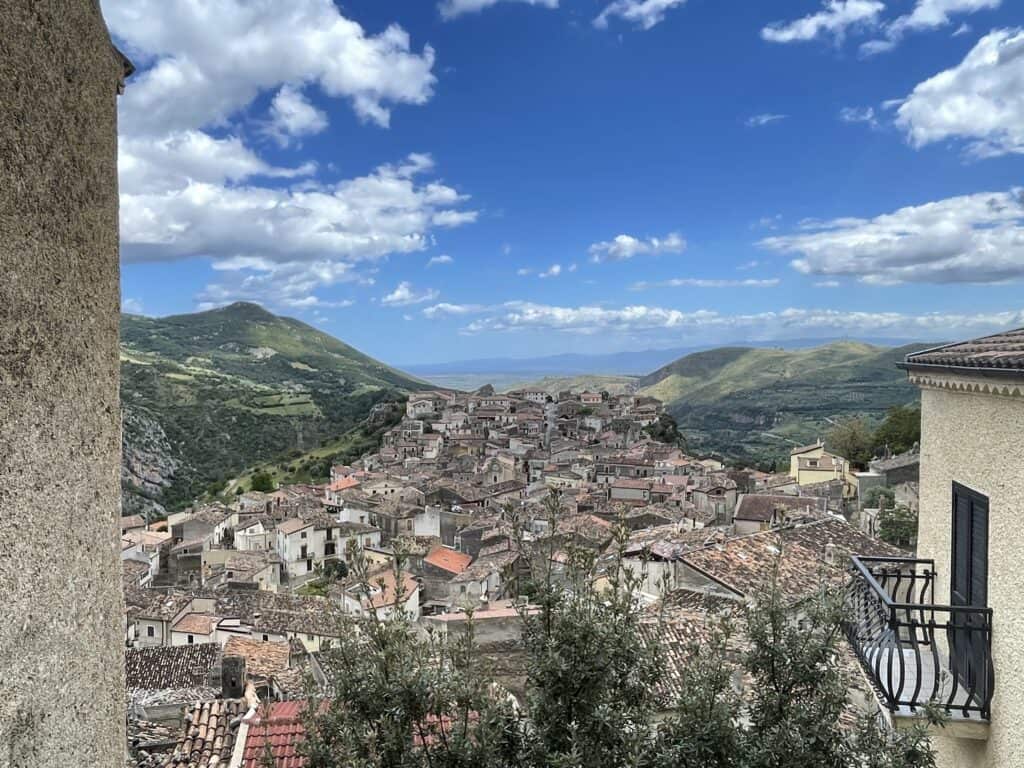
Civita: Nestled in the mountains, Civita is a small town known for its unique stone houses and bridges.
This village is a testament to the area’s rich cultural tapestry, with influences from Albanian, Norman, and Byzantine civilizations.
In addition, the view of the Raganello Gorges is simply breathtaking, making Civita a must-visit for nature lovers.
Laghi di Sibari
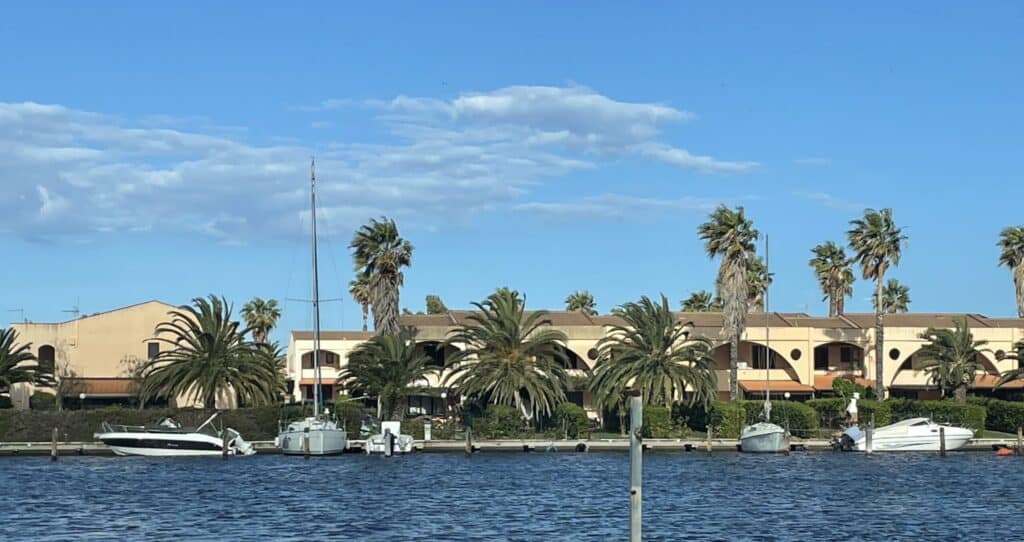
Laghi di Sibari: The lakes were created by reclaiming a swamp by Friulian entrepreneurs in the 1970s. In 2000 and 2002 the Sibari Lakes, which have a 2.5 km beach, obtained the Blue Flag. There is a major Marina and residential areas where boats have direct access to the Ionian Sea.
The area is also known for its rich archaeological heritage, offering a glimpse into the ancient city of Sybaris.
The archeological park in Sibari is a fascinating and historic site that attracts tourists and researchers alike. The park is home to the ancient city of Sybaris which was founded by Greek settlers in the 8th century BC.
Excavations have revealed an intricate network of roads, houses, and public buildings, giving visitors a glimpse into the daily life of its inhabitants.
The artifacts unearthed at the site also shed light on the cultural exchange between the Greeks and indigenous peoples of southern Italy.
The archeological park offers guided tours and educational programs for visitors to learn more about this significant piece of history.

It is a must-visit destination for those interested in archeology, ancient Greek history, or simply looking for a unique experience off the beaten path.
History buffs will appreciate these ancient ruins of the nearby city of Sybaris, which were once a famous Greek colony. Overall, Laghi di Sibari is a must-visit destination for nature lovers and ancient history buffs alike.
ALTERNATIVE ROUTE:
After Sibari if you wanted to take in the Sila National Park and the town of Cosenza, you could continue down the Ionian Coast of Calabria towards Capo Trionto and take one of the roads that branch off inland towards Sila National Park.
After this you could head to Cosenza and then return to Lamezia Terme on the Tirrenian side of Calabria.
Ciro Marina (Overnight Stay)
Ciro Marina and Ciro: These neighbouring towns are the heart of Calabria’s wine country. Visit local vineyards, taste the renowned Ciro wine, and enjoy the lush landscapes that make this region a haven for wine lovers.
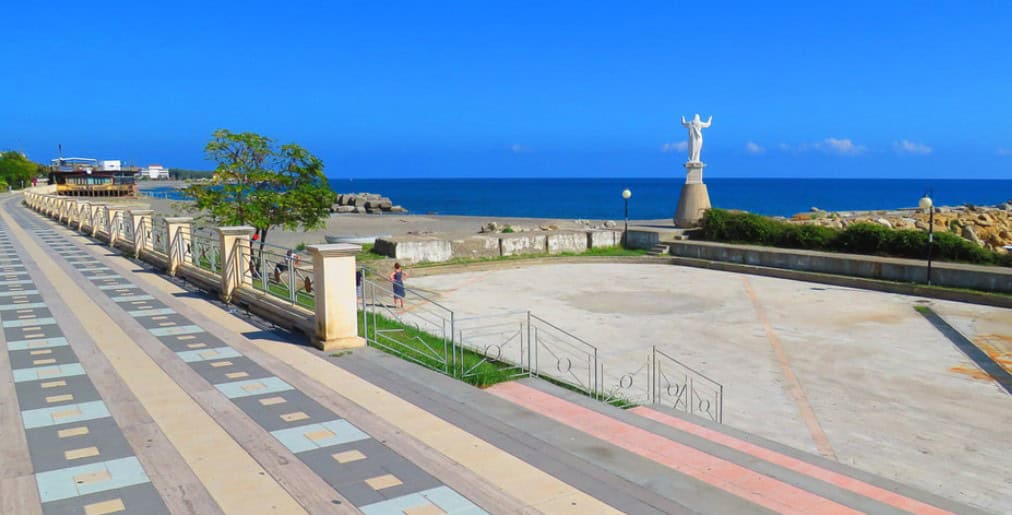
Exploring the wine culture in Ciro Marina and Ciro offers an unparalleled opportunity to immerse oneself in centuries-old winemaking traditions.
The region’s claim to fame is its Ciro wine, primarily made from the Gaglioppo grape, which thrives in the area’s unique terroir. The warm Mediterranean climate, combined with the mineral-rich soil, imparts nuanced flavours to the wine, distinguishing it from others.
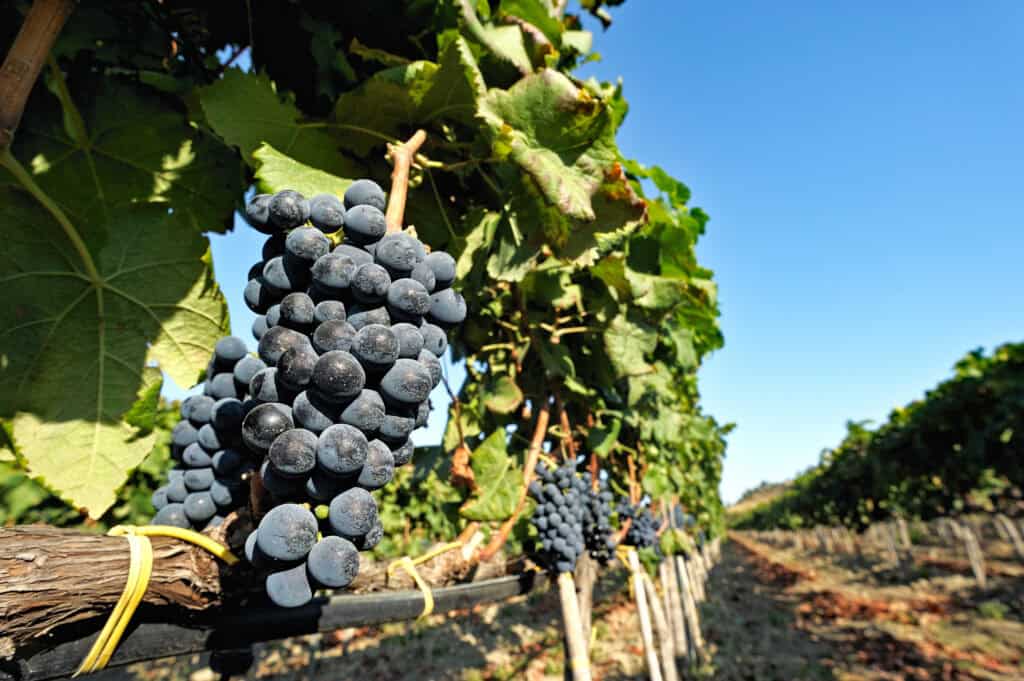

Local wineries welcome visitors with open arms, offering tours that detail the cultivation, harvesting, and fermentation processes.
Tasting sessions allow connoisseurs and us novices alike to sample the exquisite wines, often accompanied by local cheeses and cured meats, providing a delightful sensory experience.
This exploration of the vineyards is not merely a tasting adventure but a deep dive into the heart of Calabrian culture and history, making it a must-do for any visitor to the region.
Day 4:
The final day of our 4 Day road trip is a whirlwind tour of Calabria’s diverse landscapes and historic sites.
Santa Severina

Santa Severina: The medieval village of Santa Severina, with its imposing Norman Castle and ancient baptistery, transports you to another era. It is one of Calabria’s many beautiful towns. The panoramic views of the surrounding mountains and countryside are unforgettable.
Nestled atop a rocky hill, Santa Severina seems to defy time itself. Its history stretches back over millennia, with evidence of its first inhabitants dating back to the 8th century BC. This village has seen the passage of numerous civilizations, including the Greeks, Romans, Byzantines, Normans, and Saracens, each leaving an indelible mark on its architecture and culture.

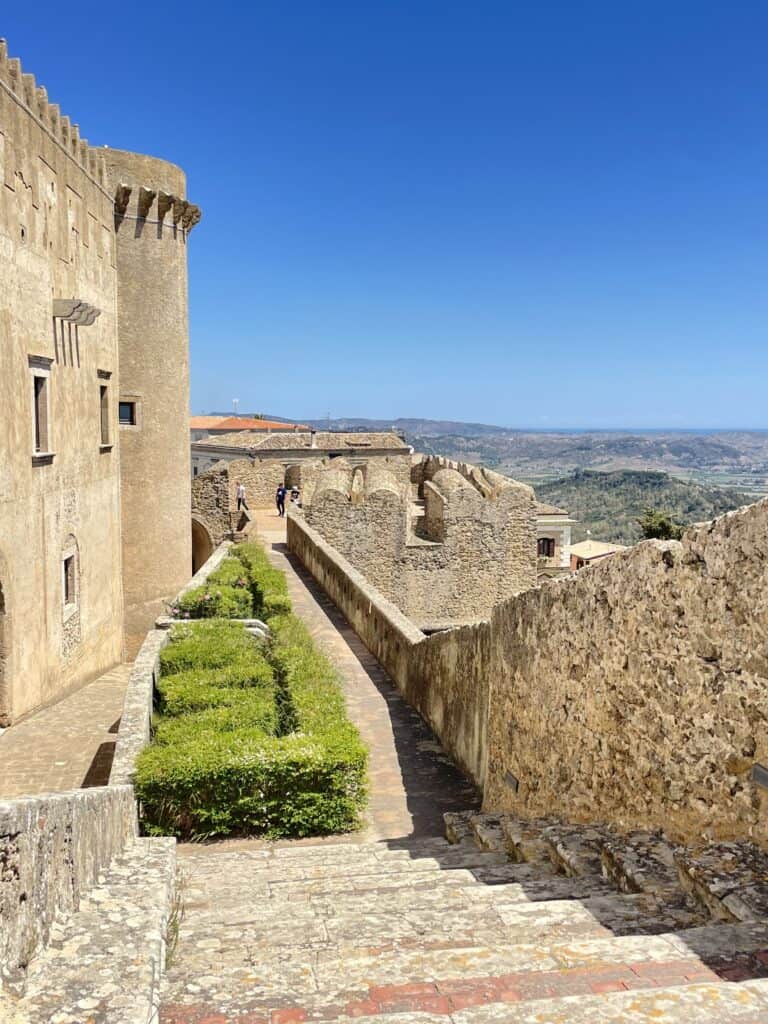

The Norman Castle is perhaps the most iconic landmark in Santa Severina. Built in the 11th century, it served as a formidable fortress that oversaw the entire region.
Adjacent to the castle lies the ancient baptistery of Santa Filomena. Dating back to the 9th century, this religious site is one of the oldest Christian structures in Calabria and is renowned for its early Christian art and architecture. The baptismal font and frescoes tell stories of faith that have been preserved through centuries.
Walking through Santa Severina’s cobblestone streets feels like stepping through the past. Each corner reveals architectural wonders that blend Byzantine and Norman influences.
Santa Severina not only captivates with its historical monuments but also enchants with its breathtaking views. From its vantage point, one can gaze upon vast olive groves, vineyards stretching towards the horizon, and the sparkling waters of the Ionian beyond.
A visit to Santa Severina offers more than just a journey through time; it provides an immersive experience into Calabria’s rich tapestry of history and culture—a true highlight for any traveller seeking to understand Italy’s profound historical legacy and one of Calabria’s most beautiful villages.
Torre Melissa
Torre Melissa: A quaint coastal town known for its beautiful beaches and clear waters. It’s the perfect spot to unwind and reflect on your road trip adventures. The town’s name is derived from the ancient Greek word “Melissa,” meaning honeybee, as it was once known for its production of delicious honey.

While here, don’t miss out on visiting the Torre Melissa Castle, a 16th-century structure that served as a military fortification against pirate attacks. Today, it stands tall and proud, offering stunning views of the surrounding coastline.
But beyond its picturesque scenery and historical significance, Torre Melissa also boasts some of the best seafood in Calabria. Indulge in fresh catch-of-the-day dishes at one of the charming local restaurants or try your hand at fishing with the locals.
Capo Rizzuto
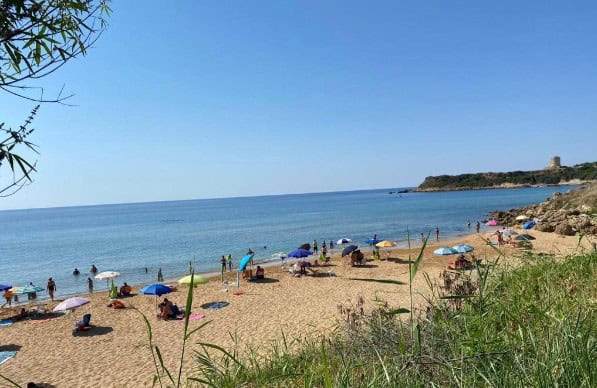
Crotone, Capo Rizzuto, and Le Castella: Explore the rich history and natural beauty of these areas. From the archaeological park in Crotone, where you can delve into the exploration of Roman ruins, offering a deep dive into the historical and cultural experiences of ancient civilizations, to the stunning marine reserve of Capo Rizzuto and the iconic Aragonese Castle of Le Castella, there’s so much to discover.
Le Castella

Le Castella is home to the stunning Aragonese Castle, a fortress that appears to float on the water, creating a picturesque scene that blends history with natural beauty.
The ancient Greeks did build a defensive structure in the castle’s location, yet the Aragonese likely built the fortress we see today around an existing fortress.
This iconic castle holds a storied past, dating back to the 15th century when it was a pivotal defence against invaders from seaward.
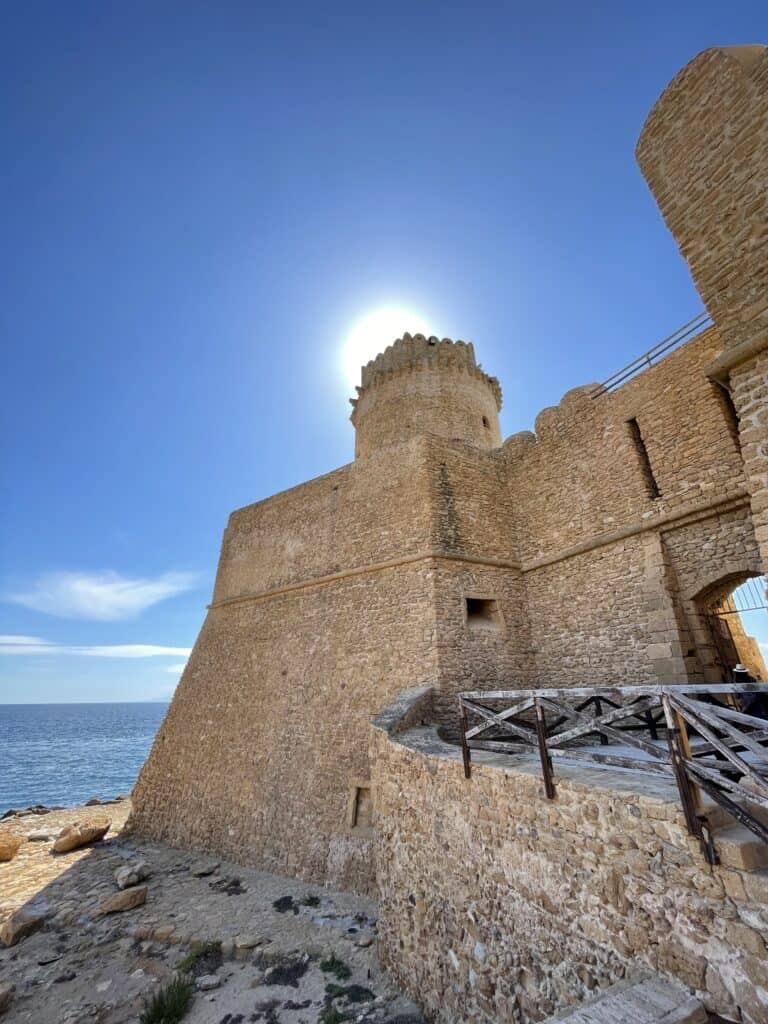
Over the centuries, it has witnessed numerous battles and sieges, each layer of its history adding to the mystique that surrounds this architectural marvel.
Today, the Aragonese Castle is not just a testament to the military engineering of its time but also a cultural relic that attracts history enthusiasts and photographers alike, eager to capture its enduring legacy against the backdrop of the Ionian Sea.
Catanzaro Lido

Catanzaro Lido: Our last stop on our road trip is in Catanzaro Lido, where you can relax on the lido, explore the historic centre, and celebrate the end of an unforgettable journey through Southern Italy.
Catanzaro City which is further inland is known as the “city of two seas” due to its unique position between the Ionian and Tyrrhenian Seas, but closer to the Ionian side.
Take a stroll through the city’s narrow streets, visit the Cathedral of Santa Maria Assunta, and indulge in some local cuisine at one of the many restaurants in Piazza Unione.
Final Thoughts
This 4-day Long weekend road trip, from the scenic beaches to the historic sites and breathtaking natural wonders, showcases some of the best of Southern Italy.
Whether you’re a history buff, a nature lover, or a foodie, Calabria and Maratea (Basilicata) offer an array of experiences that promise to enchant and inspire.
Don’t forget to check out some of our other Southern Italy posts, for more Italy travel tips, and start planning your own Southern Italy adventure.
Until then, keep dreaming of the sun-kissed shores and charming villages that await you in Calabria and Southern Italy. Safe travels!
Frequently Asked Questions about a Road Trip in Calabria
- What is the best time of year to plan a road trip in Calabria?
The optimal period for a road trip in Calabria is between late spring and early autumn, specifically from May to September when the weather is generally warm and conducive to exploring both the coastlines and mountainous regions.
If possible, however, try to avoid the months of July and August, especially August as this is when the Italians take their holidays.
Outside of these months particularly in May and September/October rates for both accommodation and car rental in Calabria will be very reasonable.
- Are there any specific driving regulations in Calabria that I should be aware of?
Italy, including Calabria, adheres to right-hand driving. It is mandatory to carry a valid driving license, vehicle registration, and insurance documents. Also, observe speed limits and be prepared for narrow, winding roads, particularly in mountainous areas.
- What kind of vehicle is recommended for a Calabria road trip?
A compact car is often recommended for navigating the sometimes narrow roads of Calabria’s quaint towns and villages. However, if you’re planning to explore more rugged terrains or mountainous areas, consider a vehicle with higher ground clearance and robust handling.
- Can I find accommodations easily while on a road trip in Calabria?
Yes, Calabria offers a variety of accommodations, ranging from luxury hotels to cozy B&Bs and agritourismos. It is advisable to book in advance, particularly during peak travel seasons, to secure your preferred lodging options.
6. Where is Calabria?
Calabria is located in the southern part of Italy, forming the “toe” of the Italian Peninsula. It is bordered by the Tyrrhenian Sea to the west and the Ionian Sea to the east, offering a coastline that boasts beautiful beaches and picturesque landscapes.
This post is the first of many more helpful posts to come, on your discovery of Southern Italy by Herb Nagel .
For an overall view of all the regions see 35 Unforgettable Destinations in Southern Italy in 2024.